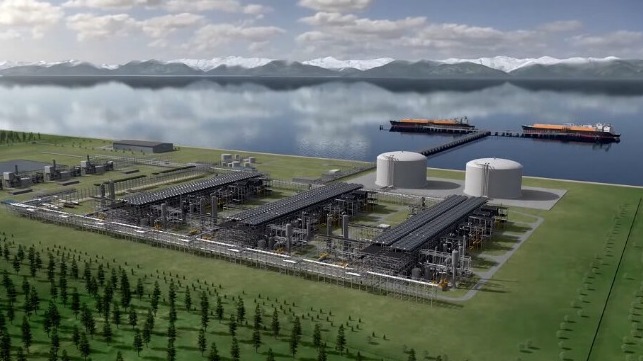Biden Administration Reapproves Massive Alaska LNG Project

Affirming a decision made by the Trump administration in 2020, the Department of Energy has issued an order approving gas exports from the Alaska LNG plant, the linchpin of a massive $39 billion megaproject that would pipe gas all the way from the North Slope to a liquefaction plant on the Gulf of Alaska. The green light from DOE puts Alaska LNG closer than ever to fruition - and new litigation.
If built, Alaska LNG would be among the most ambitious infrastructure projects undertaken in the United States in recent memory. A 3.5 billion cubic foot per day pipeline would cross the tundra of the North Slope and the mountains of central Alaska on its way to Cook Inlet. (For comparison, this distance is approximately the same as Missouri to New York, with subzero winter temperatures and rough terrain.) At Cook Inlet, the bulk of the gas would be chilled, liquefied, loaded onto LNG carriers and shipped to customers in Asia.
The cost and risk involved in constructing Alaska LNG are considerable, as well as the commercial challenges of competing with exporters on the Gulf Coast, who do not need to build state-spanning pipelines. Given these hurdles, project partners BP, ExxonMobil and ConocoPhillips decided to step aside in 2016 and let the State of Alaska take the lead on finding customers. The Alaska Gasline Development Corporation has been the lead party pursuing the project ever since, with strong support from the state's goveror and congressional delegation.
The Biden administration has signaled its support for the project as well. Last year, U.S. Ambassador to Japan Rahm Emanuel led a summit in Tokyo to promote the benefits of Alaskan natural gas as a secure alternative to Russian LNG. Japan sources about 5-10 percent of its natural gas supply from Russia, and energy security is at top of mind amidst the disruption caused by the Russian invasion of Ukraine.
Alaska LNG secured a key export permit from the Federal Energy Regulatory Commission in 2020; the permit has been contested in court by a consortium of environmental groups, including the Sierra Club and Earthjustice, which have pledged to file suit against DOE's newly-announced approval order as well.
“Over its 30-year minimum lifespan, DOE’s own numbers confirm that the [Alaska LNG] will contribute over two billion tons of greenhouse gas emissions, which will undercut many of the gains the Biden administration has proposed to curb emissions, and could emit as much as ten times more carbon into the air than the massive Willow Project," said Moneen Nasmith, senior attorney on Earthjustice’s national climate team.
The order also includes a new amendment that requires Alaska LNG to attest that there has been no byproduct CO2 venting from its activity during the prior month; however, the reporting requirement has a broad exclusion for CO2 venting needed for "emergency, maintenance or operational" purposes, and it does not cover methane venting. According to Nasmith, this loose prohibition may reduce Alaska LNG's GHG emissions at the margins, but represents a "small fraction of the overall emissions the project will cause."
